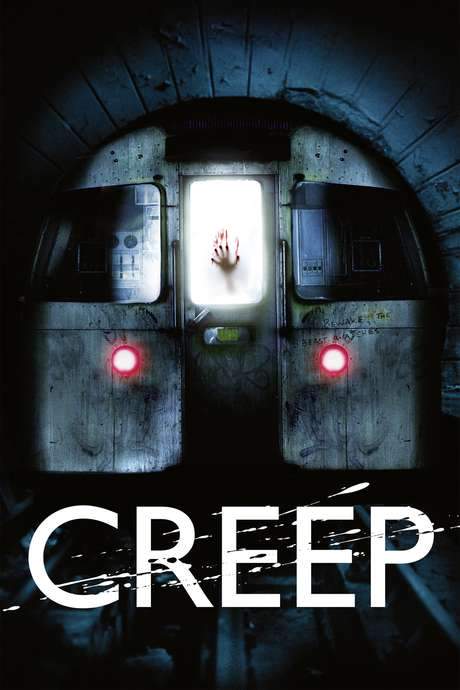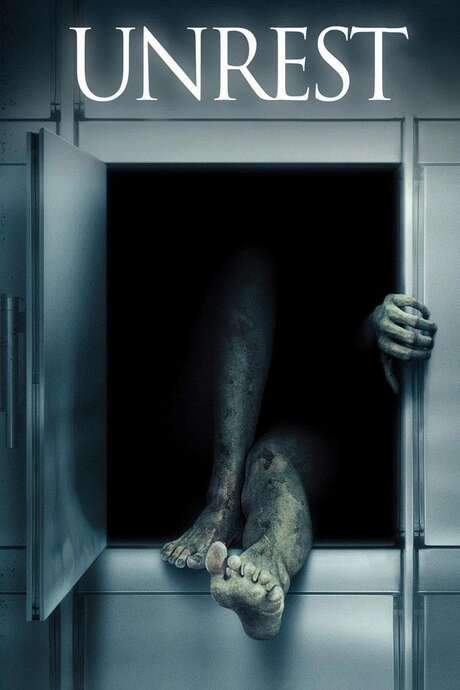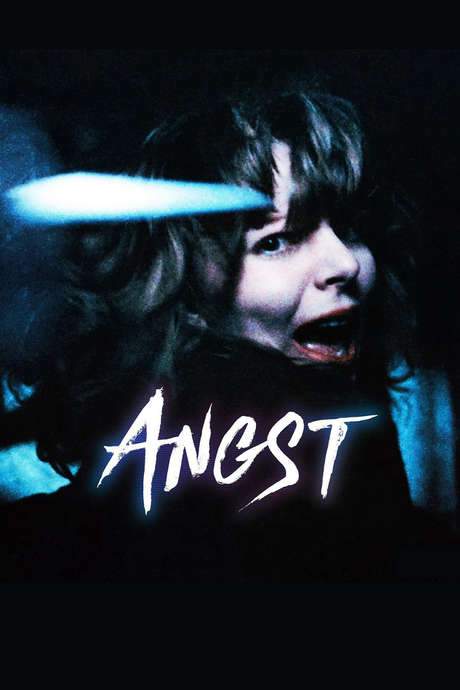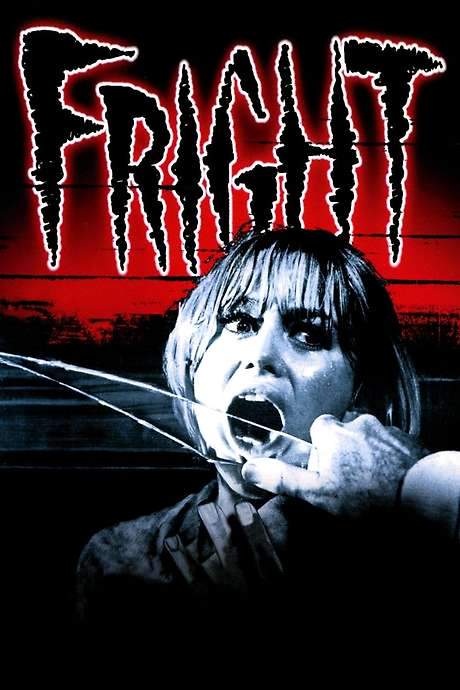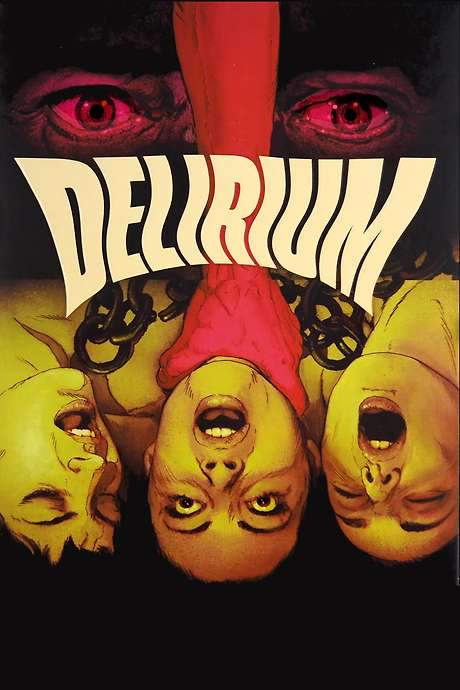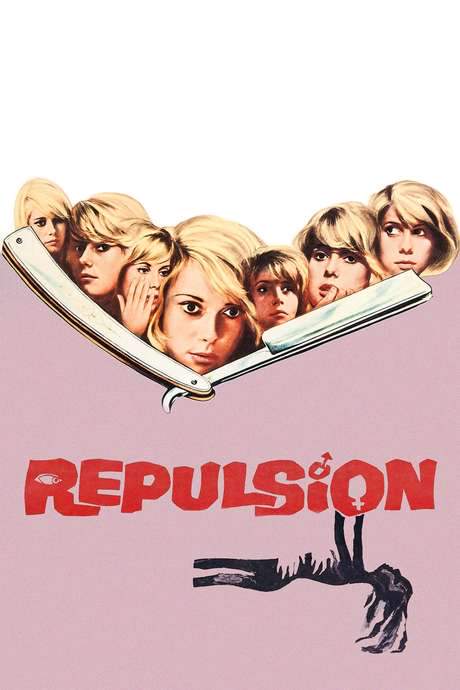
Repulsion
Year: 1965
Runtime: 105 mins
Language: English
Carole, a young manicurist haunted by an intense fear of men, is left alone in her London flat when her sister and roommate Helen departs for an Italian vacation with her married boyfriend. Isolated, Carole’s anxiety spirals into terrifying hallucinations, blurring dream and reality, and driving her toward a shocking mental breakdown.
Warning: spoilers below!
Haven’t seen Repulsion yet? This summary contains major spoilers. Bookmark the page, watch the movie, and come back for the full breakdown. If you're ready, scroll on and relive the story!
Repulsion (1965) – Full Plot Summary & Ending Explained
Read the complete plot breakdown of Repulsion (1965), including all key story events, major twists, and the ending explained in detail. Discover what really happened—and what it all means.
Carole Ledoux, a shy Belgian manicurist, lives a quiet, solitary life in London with her older sister Hélène Ledoux. From the outside, she appears calm and composed, but inside she carries a deep sense of detachment that makes even everyday interactions feel strained. A persistent suitor, Colin, tries to win her over with cautious enthusiasm, driving her home and pressing for closeness, only to be met with evasive replies and retreating footsteps as she slips away to her own private world. The tension between longing and withdrawal threads through her days, and the atmosphere outside her door grows steadily heavier as she clings to routines—especially her habit of brushing her teeth late at night and the uneasy sounds of life happening in the apartment above and beside hers.
Her growing unease is sharpened by Helen’s uneasy relationship with a married man named Michael, a presence that Carol dislikes and distrusts. He leaves his razor and toothbrush in her bathroom glass, a small, intimate intrusion that unsettles her further and foreshadows how deeply the personal bleed of others can intrude on her own space. Night after night, the sounds of Helen and Michael together seep into Carol’s half-formed sense of safety, turning the apartment into a pressure chamber where every noise becomes a threat.
One afternoon, a small crack in the pavement mirrors the fracture inside Carol. Colin crosses her path, and the encounter is awkward and uncomfortable; he drives her home and makes repeated attempts to kiss her, but she pulls away, fleeing upstairs to brush her teeth with frantic vigor before weeping in private. That same night, Helen asks about the toothbrush and razor in the trash, a tangle of housekeeping and intrusion that underscores how fragile Carol’s boundaries have become. Back at work, she grows increasingly distant from colleagues and customers, so much so that her boss decides to send her home early.
When Helen and Michael depart for Italy for a holiday, Carol is left alone in the apartment. A rabbit in the fridge becomes a macabre symbol of her disconnection from ordinary meals and rituals. She is distracted by Michael’s belongings scattered around the space, including an unwashed shirt whose odor makes her gag. She tries on one of Helen’s dresses and catches a dark figure in the mirror, as if the room itself is learning to imitate her fears. That night, she hears footsteps outside her bedroom and experiences a terrifying sequence in which she imagines a man breaking in and raping her. A phone call from Colin comes, but she hangs up, choosing solitude over contact.
Back at the salon, a moment of clumsiness leaves a client with a cut finger, and Carol is sent home early. A coworker discovers the uncooked rabbit’s head in Carol’s purse, a chilling sign that the boundary between fantasy and reality has dissolved. At the apartment, she studies an old family photo and witnesses the wall behind it crack and fracture just like a mirror, as if the house itself is tearing along with her mind. Colin arrives again, but Carol refuses to answer the door; he breaks in, professing his love, and she retaliates with shocking violence, bludgeoning him to death with a candlestick. Blood is cleaned, the front door barricaded, and Colin’s body placed in the bathtub. In bed, she endures another rape hallucination, waking to the same terrifying sense of violation in the dark corridor.
The next morning, Carol wanders the shadowed hallway, where hands emerge from the walls to grab at her. An upsetting telephone call from Michael’s wife arrives, and Carol cuts the wire, severing one more thread of connection. The landlord, Patrick Wymark, appears to collect the rent but finds the place in chaos. Unable to enter through the barricades, he breaks in anyway and eyes the state of the apartment—with the raw, rotting rabbit head and the overall decay you’d expect from a place consumed by fear. He propositions Carol to “take care of him” in exchange for letting the rent slide, and when she does not respond, he tries to force himself on her. She—again—fights back, using Michael’s straight razor to kill him, leaving the scene more brutal and desperate than before.
The return of Helen and Michael brings a new kind of horror. Helen is shocked by the apartment’s collapse into disorder, and Michael discovers Colin’s corpse in the bathtub. Helen finds Carol crouched under a bed in a catatonic state as neighbors stream in, and Michael carries Carol out of the room with a tense, uneasy smile. In the final image, a family photograph on the living-room wall shows Carol as a child, looking with loathing toward an older male figure in the frame, while others around her smile for the camera—an unsettling hint that the past still casts a long shadow over the present, and that loneliness can turn a home into a trap.
The film folds psychological dread into a stark, domestic landscape, where the quiet of a city apartment becomes the stage for a gradual breakdown. Through Carol’s increasing withdrawal, the story explores how isolation, intrusion, and fear can blur the line between reality and perception, culminating in a chilling confrontation with the world outside—or the parts of the self that refuse to be contained.
Last Updated: October 09, 2025 at 11:18
Unlock the Full Story of Repulsion
Don't stop at just watching — explore Repulsion in full detail. From the complete plot summary and scene-by-scene timeline to character breakdowns, thematic analysis, and a deep dive into the ending — every page helps you truly understand what Repulsion is all about. Plus, discover what's next after the movie.
Repulsion Timeline
Track the full timeline of Repulsion with every major event arranged chronologically. Perfect for decoding non-linear storytelling, flashbacks, or parallel narratives with a clear scene-by-scene breakdown.

Similar Movies to Repulsion
Discover movies like Repulsion that share similar genres, themes, and storytelling elements. Whether you’re drawn to the atmosphere, character arcs, or plot structure, these curated recommendations will help you explore more films you’ll love.
Explore More About Movie Repulsion
Repulsion (1965) Scene-by-Scene Movie Timeline
Repulsion (1965) Movie Characters, Themes & Settings
Repulsion (1965) Spoiler-Free Summary & Key Flow
Movies Like Repulsion – Similar Titles You’ll Enjoy
Rabid (1977) Detailed Story Recap
Reincarnation (2005) Plot Summary & Ending Explained
Creep (2004) Movie Recap & Themes
Unrest (2006) Full Movie Breakdown
Macabre (1980) Movie Recap & Themes
Unhinged (1982) Plot Summary & Ending Explained
Murder Obsession (1981) Spoiler-Packed Plot Recap
Angst (1983) Film Overview & Timeline
Nekromantik (1988) Plot Summary & Ending Explained
Delirium (1979) Complete Plot Breakdown
Frightmare (1974) Spoiler-Packed Plot Recap
Fright (1971) Story Summary & Characters
Delirium (1972) Full Summary & Key Details
The Blood Spattered Bride (1972) Complete Plot Breakdown
The Stendhal Syndrome (1996) Full Summary & Key Details





